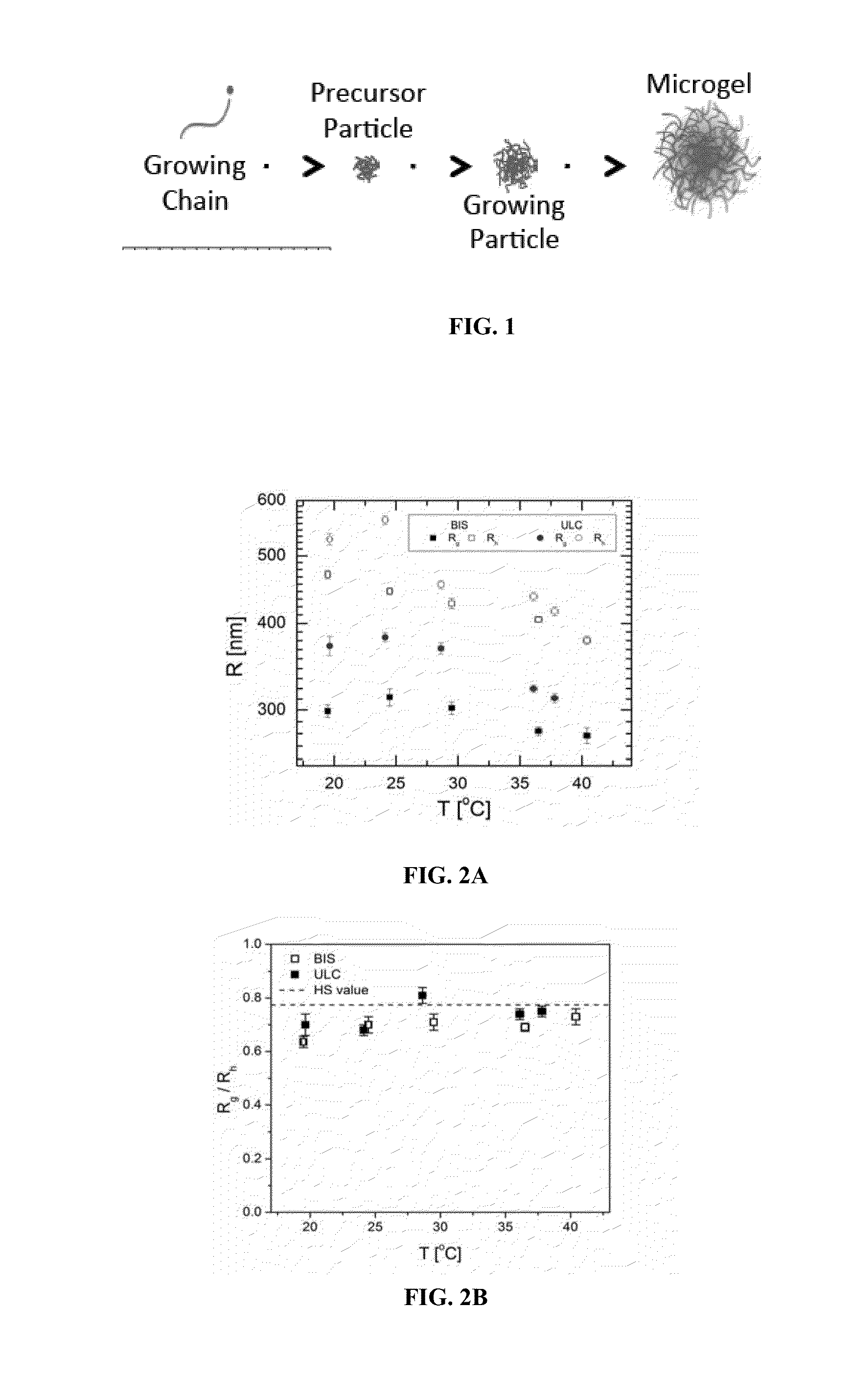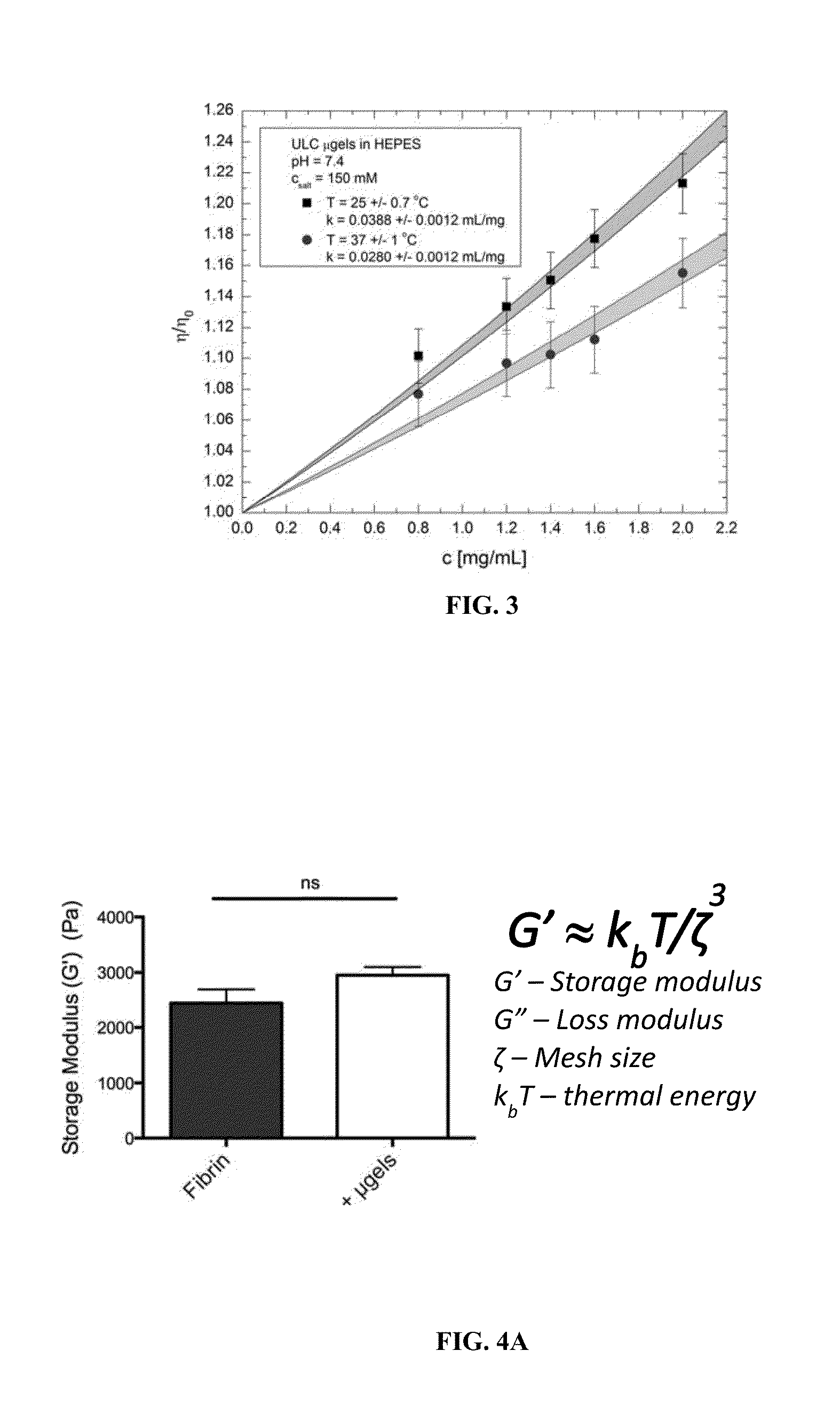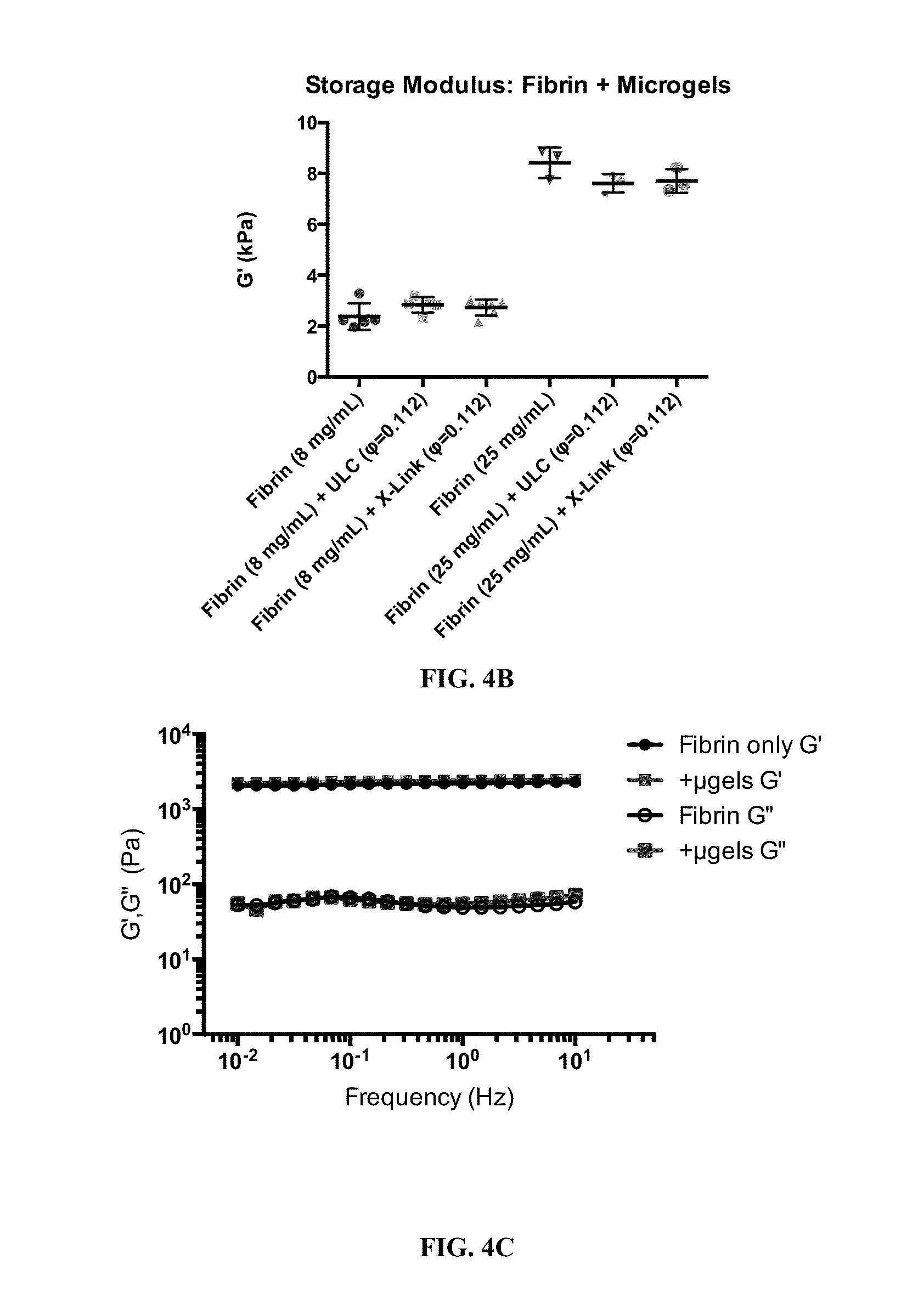Hybrid fibrin-microgel constructs for tissue repair and regeneration
a fibrin-microgel and hybrid technology, applied in the field of fibrin-microgel hybrid matrices, can solve problems such as difficult application in practice, and achieve the effects of facilitating cell spreading, facilitating migration and infiltration, and improving vascularization
- Summary
- Abstract
- Description
- Claims
- Application Information
AI Technical Summary
Benefits of technology
Problems solved by technology
Method used
Image
Examples
examples
Eample 1
l Synthesis of Microgels—Hydrogel Microparticles
[0186]Materials and Methods
[0187]Microgels were synthesized from pNIPAm-AAc (p(N-isopropylacrylamide-co-acrylic-acid)) using precipitation polymerization method. The polymer chains formed microgels either with the use of 2% N,N′-methylenebisacrylamide (BIS) as a crosslinker, or without exogenous crosslinker to form ultra-low crosslinked microgels (ULC).
[0188]Sterile filtered solutions of NIPAm monomer (recrystallized from n-hexanes) and acrylic acid were mixed at 450 rpm in a reaction vessel at 70° C. before the addition of an initiator, ammonium persulfate (APS). The reaction proceeded for 6 hours before collecting the sample for purification and lyophilization. The ULC microgel composition was 95% poly(N-isopropylacrylamide) (pNIPAm) / 5%AAc to provide charged groups for later encapsulation of cationic proteins. Microgel AAc groups were labeled with cadaverine conjugates of AlexaFluor dyes (AF555 or 488) via EDC / NHS chemistry f...
example 2
Viscometry for Calculating the Volume Fraction of Microgel Suspensions
[0192]Materials and Methods
[0193]Since the particle volume fraction, Φ, is the relevant measure of concentration in colloidal suspensions, viscometry measurements to determine this quantity for both ULC and BIS crosslinked microgel suspensions were performed. An Ubbelodhe viscometer was used to measure the time it takes for microgel suspensions of various weight percentages to travel through a capillary. The time value and constant for the specific viscometer could then be used to calculate the dynamic viscosity, which could be plugged into the Einstein-Batchelor (EB) equation (η / η0=5.9Φ2+2.5Φ+1) to solve for Φ. The coefficient for the Φ2 term was chosen to be 5.2 as it is known to approximate the value for soft microgel suspensions.
[0194]Viscometry was performed with the BIS crosslinked microgels to adequately control experiments with constant volume fraction. Volume fraction could also be calculated by knowing t...
example 3
Preparation of Fibrin Gels and Fibrin-Microgel Constructs
[0197]Materials and Methods
[0198]Human fibrinogen (CSL Behring) at 8 mg / mL (4× physiological concentrations) was used to form fibrin gels. Because fibrin polymerization and its resulting structure is dependent on multiple factors including fibrinogen, thrombin, calcium concentration, and ionic strength, the gels were formed in HEPES (N-2-hydroxyethylpiperazine-N-2-ethanesulfonic acid) CaCl2 buffer (150 mM NaCl, 5 mM CaCl2, 25 mM HEPES; pH 7.4) and thrombin (0.1-10 U / mL) The amount of clottable protein was determined by analyzing clot liquor protein concentration (CBQCA protein assay).
[0199]Results
[0200]Addition of microgels to fibrin gels did not significantly affect the total clottable protein incorporated into the clot (data not shown). In addition, higher fibrinogen concentrations could be used to more closely mimic concentrations represented in fibrin sealants.
PUM
| Property | Measurement | Unit |
|---|---|---|
| pH | aaaaa | aaaaa |
| concentrations | aaaaa | aaaaa |
| concentrations | aaaaa | aaaaa |
Abstract
Description
Claims
Application Information
 Login to View More
Login to View More - R&D
- Intellectual Property
- Life Sciences
- Materials
- Tech Scout
- Unparalleled Data Quality
- Higher Quality Content
- 60% Fewer Hallucinations
Browse by: Latest US Patents, China's latest patents, Technical Efficacy Thesaurus, Application Domain, Technology Topic, Popular Technical Reports.
© 2025 PatSnap. All rights reserved.Legal|Privacy policy|Modern Slavery Act Transparency Statement|Sitemap|About US| Contact US: help@patsnap.com



